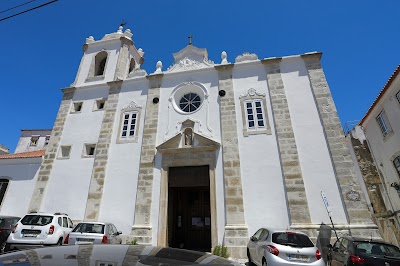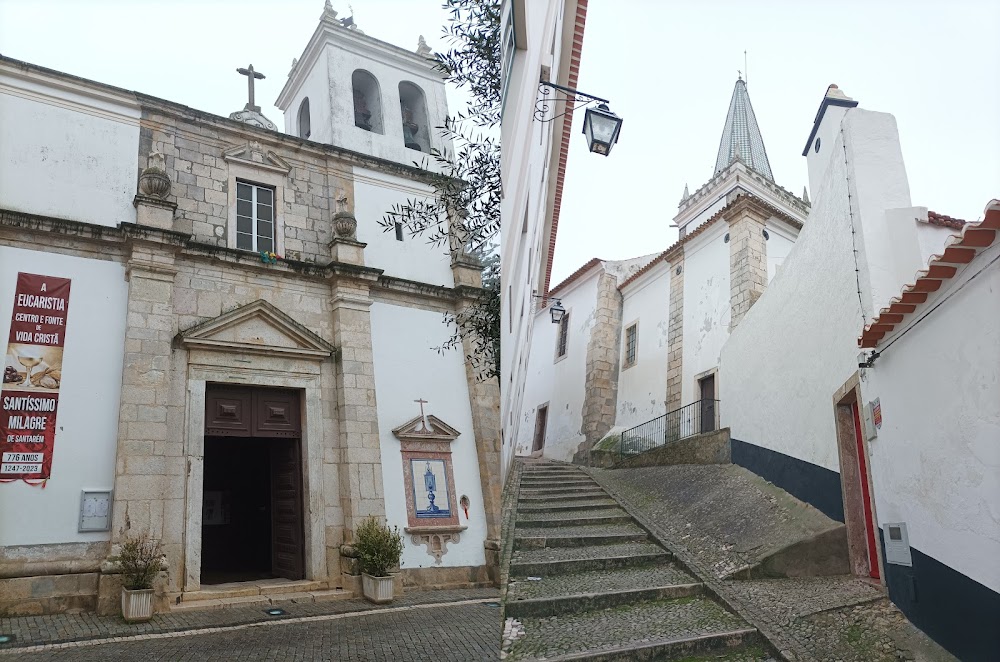Church of Grace (Igreja da Graça)
Overview
In the picturesque city of Santarém, Portugal, the magnificent **Church of Grace (Igreja da Graça)** stands as a remarkable symbol of history, art, and faith. This architectural gem, rooted in the 14th century, reflects the flourishing of the Gothic style in Portugal. Commissioned by the influential **Order of Christ**, which had deep ties to the Knights Templar, the church played a pivotal role during the Portuguese Age of Discoveries, serving as a beacon of both spiritual and national significance.
The foundation stone of the Church of Grace was laid in **1380**, under the direction of D. João Fernandes Andeiro, the grand master of the Order of Christ. Renowned architects and artisans from across Europe collaborated on this ambitious project, which showcases traditional Gothic elements such as pointed arches, ribbed vaults, and flying buttresses. Each detail was masterfully executed, resulting in an awe-inspiring structure that continues to captivate visitors today.
A key figure in the creation of this masterpiece was **master mason Diogo Gonçalves**, whose extensive experience in Gothic architecture greatly influenced the church’s design. Working alongside him were local craftsmen and laborers, whose skilled hands transformed raw stone and wood into intricate details. The primary material used for construction was limestone, quarried locally, ensuring both durability and longevity for this iconic edifice.
One of the church's most exceptional features is its **rose window**, a stunning example of Gothic stained glass that measures nearly ten feet in diameter. This breathtaking window floods the interior with vibrant light, creating an ethereal atmosphere that has mesmerized worshippers and visitors for centuries. Designed by a team of skilled glaziers led by the renowned artist **Mestre Pêro**, the window depicts various Biblical scenes, further enriching the church's spiritual aura.
Inside, the enchantment continues with towering columns and a high vaulted ceiling that draw the eye upward, evoking a sense of elevation and spiritual transcendence. The high altar, intricately carved from wood and gilded with gold leaf, stands as a magnificent testament to the religious devotion of the era. Crafted by local artists in the early 15th century, this altar remains one of the most treasured elements of the Church of Grace.
Throughout the centuries, the Church of Grace has withstood numerous challenges, including the devastating **earthquake of 1755** that affected much of Portugal. Remarkably, the church required only minimal restoration due to its robust construction and high-quality materials. Subsequent restorations in the 19th and 20th centuries have ensured that it remains true to its original Gothic style, preserving its historical and architectural integrity.
The church also houses several tombs of notable figures, including **Pedro Álvares Cabral**, the explorer credited with discovering Brazil. His tomb, a significant draw for historians and tourists alike, adds an additional layer of historical importance to the Church of Grace.
Today, the Church of Grace continues to serve as a vibrant place of worship and a cherished cultural landmark. It stands as a testament to the architectural prowess and artistic zeal of the medieval period, attracting visitors from around the world who come to marvel at its beauty and rich history.
In conclusion, the Church of Grace in Santarém is not only a monument of stunning architectural beauty but also an embodiment of Portugal's rich cultural heritage. Its timeless allure and historical significance serve as a living reminder of the nation's storied past and the enduring spirit of its people.






